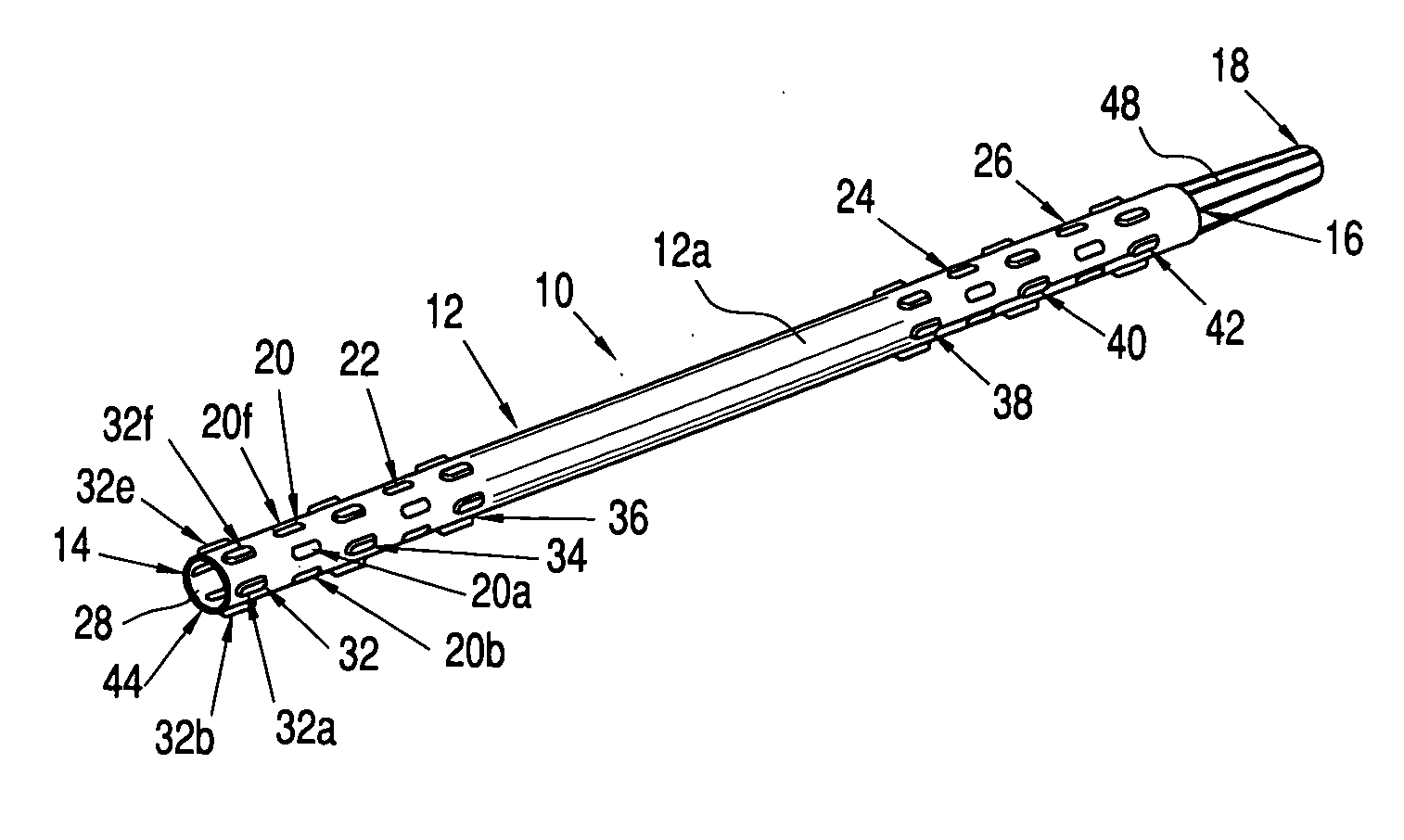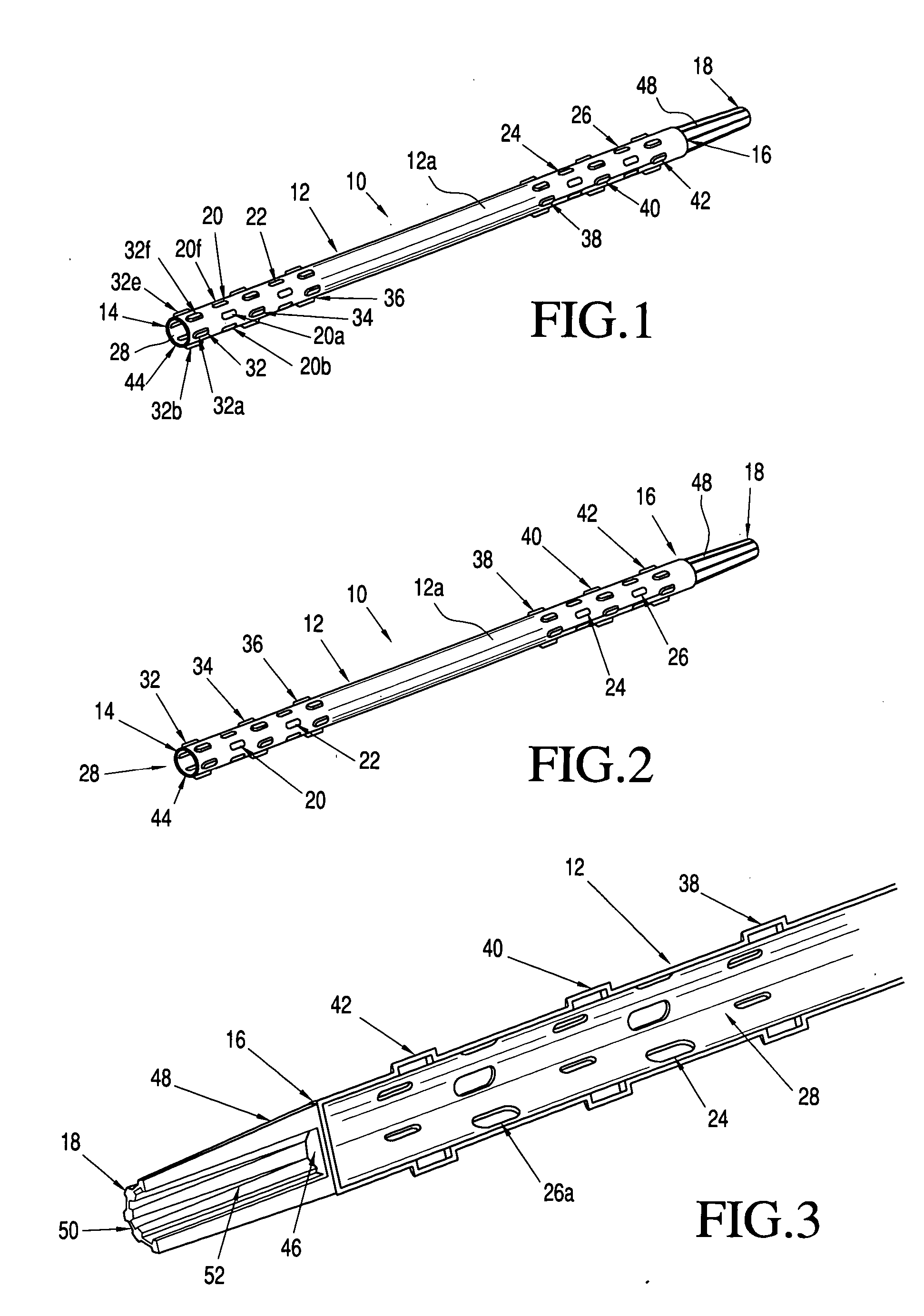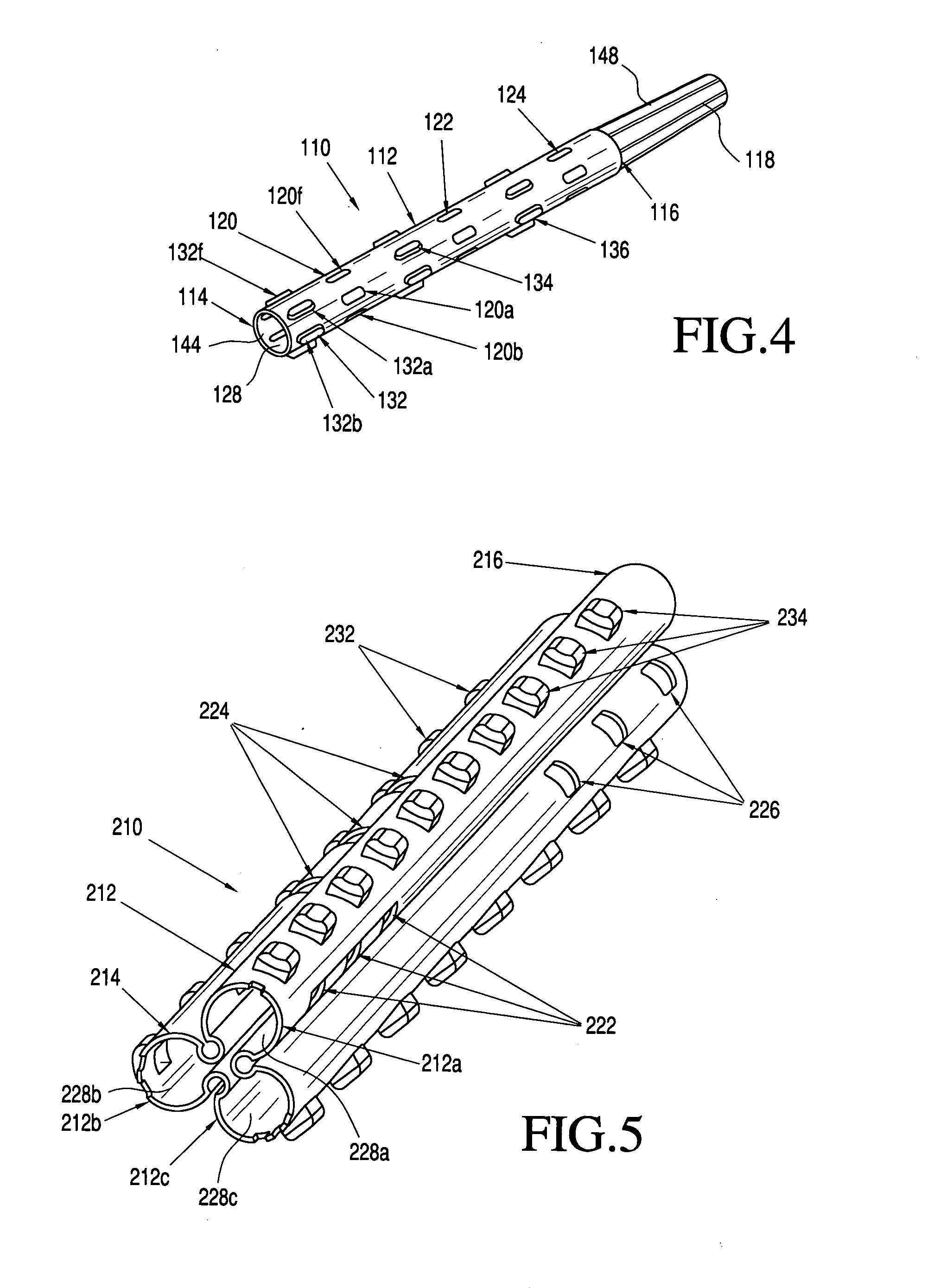Masonry wall anchoring device, system, and anchoring method
a technology for masonry walls and devices, applied in the direction of fastening means, mechanical devices, building repairs, etc., can solve the problems of reducing the structural strength of the combined wall layer, exposing cement between adjacent bricks on the outer brick wall, and supporting a significant amount of the entire weight of the building structure, so as to improve the performance of these auxiliary devices, reduce the overall cost, and enhance the application
- Summary
- Abstract
- Description
- Claims
- Application Information
AI Technical Summary
Benefits of technology
Problems solved by technology
Method used
Image
Examples
Embodiment Construction
[0096] The present invention is directed to an anchoring device for strengthening, reinforcing, fixing and / or repairing masonry structures, in particular a masonry interior and exterior partition and load bearing walls. The anchoring device according to the present invention is particularly suitable for use with a single brick wall layer, or a combined brick wall structure having two (2) or more spaced apart brick wall layers. The anchoring device according to the present invention can be provided with an optional connecting end configured to connect with other structural elements or components of the building, in particular an internal or external wall structure of the building (e.g. wall sheathing, wall studs, band board, steel frame, etc.)
[0097] The anchoring device according to the present invention can be made from a wide variety of materials such as plastic, rubber, synthetic rubber, fiberglass, resin, plastic composite, metal, metal composite, ceramic, ceramic composite, phe...
PUM
| Property | Measurement | Unit |
|---|---|---|
| length | aaaaa | aaaaa |
| pressure | aaaaa | aaaaa |
| weight | aaaaa | aaaaa |
Abstract
Description
Claims
Application Information
 Login to View More
Login to View More - R&D
- Intellectual Property
- Life Sciences
- Materials
- Tech Scout
- Unparalleled Data Quality
- Higher Quality Content
- 60% Fewer Hallucinations
Browse by: Latest US Patents, China's latest patents, Technical Efficacy Thesaurus, Application Domain, Technology Topic, Popular Technical Reports.
© 2025 PatSnap. All rights reserved.Legal|Privacy policy|Modern Slavery Act Transparency Statement|Sitemap|About US| Contact US: help@patsnap.com



